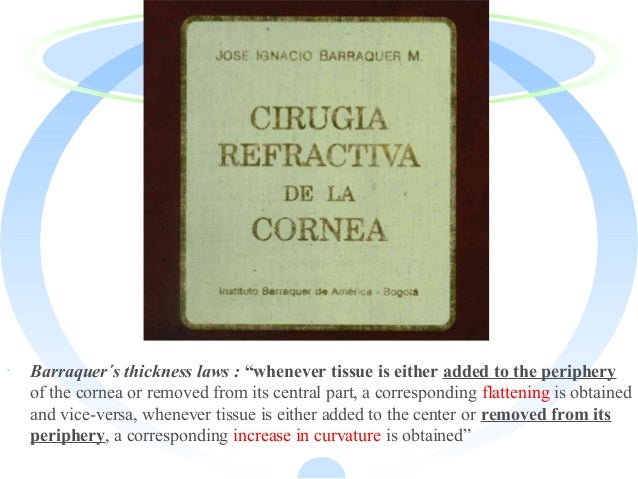

Atypical presentations of PMD have been reported in the literature. A characteristic pattern of inferior corneal steepening and subsequent against-the-rule astigmatism is found on corneal topography. A 1- to 2-mm zone of uninvolved normal cornea separates the region of thinning from the peripheral limbus. The hallmark of this disorder includes an area of corneal protrusion above the point of maximal thinning rather than within the area of maximal thinning as with keratoconus.

2012 53:3286–95.Pellucid marginal degeneration (PMD) is characterized by nonulcerative, noninflammatory, clear thinning of the inferior portion of the peripheral cornea. Corneal topographic analysis by 3-dimensional anterior segment optical coherence tomography after endothelial keratoplasty. Higashiura R, Maeda N, Nakagawa T, Fuchihata M, Koh S, Hori Y, et al. Corneal topographic analysis in patients with keratoconus using 3-dimensional anterior segment optical coherence tomography. Nakagawa T, Maeda N, Higashiura R, Hori Y, Inoue T, Nishida K. Four discriminant models for detecting keratoconus pattern using Zernike coefficients of cornea aberrations. Saika M, Maeda N, Hirohara Y, Mihashi T, Fujikado T, Nishida K. Evaluation of corneal thickness and topography in normal eyes using the Orbscan corneal topography system. Rasterstereography-based classification of normal corneas. Naufal SC, Hess JS, Friedlander MH, Granet NS. Detection and classification of mild irregular astigmatism in patients with good visual acuity. Corneal topography of pellucid marginal degeneration. Maguire LJ, Klyce SD, McDonald MB, Kaufman HE. Ectatic disorders associated with a claw-shaped pattern on corneal topography. Lee BW, Jurkunas UV, Harissi-Dagher M, Poothullil AM, Tobaigy FM, Azar DT. Classification of normal corneal topography based on computer-assisted video keratography. 2011 152:157–62.īogan SJ, Waring GO 3rd, Ibrahim O, Drews C, Curtis L. What’s in a name: keratoconus, pellucid marginal degeneration, and related thinning disorders. 2007 143:500–3.īelin MW, Asota IM, Ambrosio R Jr, Khachikian SS. Corneal topographic and pachymetric screening of keratorefractive patients. Keratectasia in 2 cases with pellucid marginal corneal degeneration after laser in situ keratomileusis. Scheimpflug photographic diagnosis of pellucid marginal degeneration. Sridhar MS, Mahesh S, Bansal AK, Nutheti R, Rao GN. Comparison of refractive changes after deep anterior lamellar keratoplasty and penetrating keratoplasty for keratoconus. Kim KH, Choi SH, Ahn K, Chung ES, Chung TY. Pellucid corneal marginal degeneration: a review. Jinabhai A, Radhakrishnan H, O’Donnell C. Pellucid marginal corneal degeneration: evaluation of the corneal surface and contact lens fitting. Gruenauer-Kloevekorn C, Fischer U, Kloevekorn-Norgall K, Duncker GI. Keratoconus and related noninflammatory corneal thinning disorders. Pellucid marginal corneal degeneration: a clinicopathologic study of two cases. Rodrigues MM, Newsome DA, Krachmer JH, Eiferman RA. Keratoconus with pellucid marginal corneal degeneration. Kayazawa F, Nishimura K, Kodama Y, Tsuji T, Itoi M. The similarity in the topographic and pachymetric patterns in eyes with PMD and keratoconus suggests that they may be a continuity of the same disorder with different phenotypes. Although the decentered pattern, including the decentered oval (27 %) and decentered round (20 %) pattern, on pachymetric map was specific to eyes with PMD, the incidence of these patterns was relatively low. The most common pattern in the elevation maps for both surfaces was the asymmetric island in eyes with PMD and keratoconus. In eyes with keratoconus, the most common pattern was the inferior steepening pattern (67 %). In eyes with PMD, the most common axial power map pattern was the crab claw pattern (78 %) followed by the inferior steepening pattern (18 %). The eyes were classified into the respective patterns by visual inspection of these maps. For all eyes, we obtained the topographic patterns of the axial power maps, anterior and posterior elevation maps and pachymetric maps using a rotating Scheimpflug camera. This was a retrospective, cross-sectional case-series in which 49 eyes of 33 patients with PMD, 51 eyes of 51 patients with keratoconus and 53 eyes of 53 subjects with normal corneas (controls) were examined and compared. To determine the characteristics of the shape of the cornea in patients with pellucid marginal corneal degeneration (PMD) and to compare these characteristics to those of eyes with keratoconus and eyes of normal subjects.


 0 kommentar(er)
0 kommentar(er)
